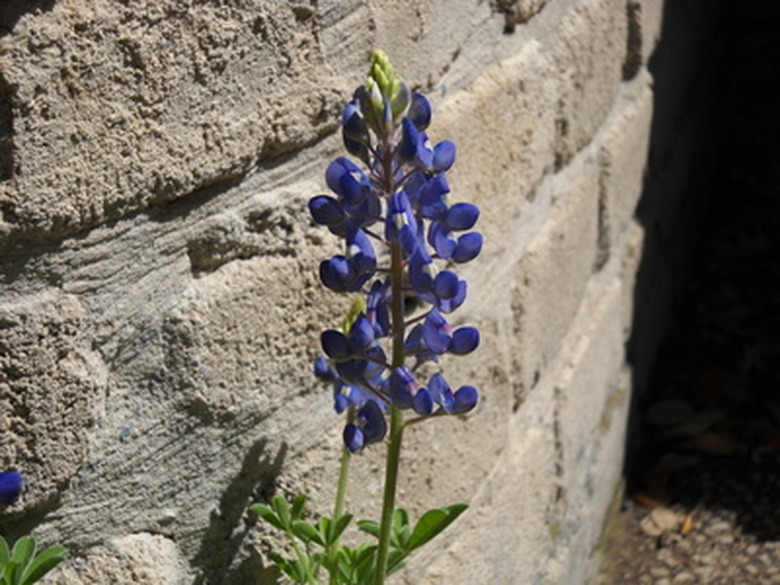7 Stages Of A Bluebonnet
Texas bluebonnets (Lupinus texensis) populate the pastures and roadsides of Texas each spring with a burst of striking blue blooms. Growing 12- to 24-inches tall, the Lone Star state's official flower is a self-pollinating annual that grows in a variety of soil conditions. The bold blue, fragrant flowers are attractive to bees and butterflies, making this the perfect specimen for containers, flowerbeds and cottage gardens.
Germination
Texas bluebonnet seeds, planted in the fall, typically germinate within 15 to 75 days. Scarified seeds offer the best results when planted in a location that offers at least 8 to 10 hours of sunlight per day and well-draining soil.
Root Development
After germination, Texas bluebonnets spend the winter months forming a massive root system. The roots contain nitrogen-fixing nodules, allowing the bluebonnet to take nitrogen from the atmosphere which feeds the plant.
- Texas bluebonnets (Lupinus texensis) populate the pastures and roadsides of Texas each spring with a burst of striking blue blooms.
- The bold blue, fragrant flowers are attractive to bees and butterflies, making this the perfect specimen for containers, flowerbeds and cottage gardens.
Early Foliage
As the root system develops below, a rosette crown of foliage sprouts on the surface. Only a few inches in height, this low-lying sprout spreads outward covering a dinner plate sized area. After first freeze, the bottom leaves develop a deep crimson color.
Stem and Bud Growth
Spring initiates the growth process for the remainder of the plant. When temperatures rise, the stem grows from the center of the crown with a single bloom forming at the tip. Light green sets of compound leaves, typically with five leaflets, form along the stem.
Bloom
Each compact bloom is comprised of 50 or more flowers that open from the bottom first, revealing deep blue petals ending in a terminal white tip. While blue is the most common color, there are albino white and red strains as well as a rare pink strain named "Abbott." The bloom period lasts for nearly one month. However, if plants are subjected to excess shade, blooms are less likely to form.
- As the root system develops below, a rosette crown of foliage sprouts on the surface.
- After first freeze, the bottom leaves develop a deep crimson color.
Seed Development
Seeds form along the stem during the bloom cycle. Texas bluebonnets, part of the bean family, form leguminous pods. Unlike relatives, however, these seeds and pods are poisonous and should not be ingested by humans or animals. Pods mature two weeks after the end of the blooming period. To save bluebonnet seeds, harvest pods before they burst, remove seeds and allow them to dry thoroughly before storing.
End
The bluebonnet growth cycle is complete once seeds mature and foliage dies away. In fields and other large areas, the plants can be mowed off to aid in dispersal of seeds and to control competition from weeds and grasses.
- Seeds form along the stem during the bloom cycle.
- To save bluebonnet seeds, harvest pods before they burst, remove seeds and allow them to dry thoroughly before storing.
